Tricks to Improve Your Standing Broad Jump
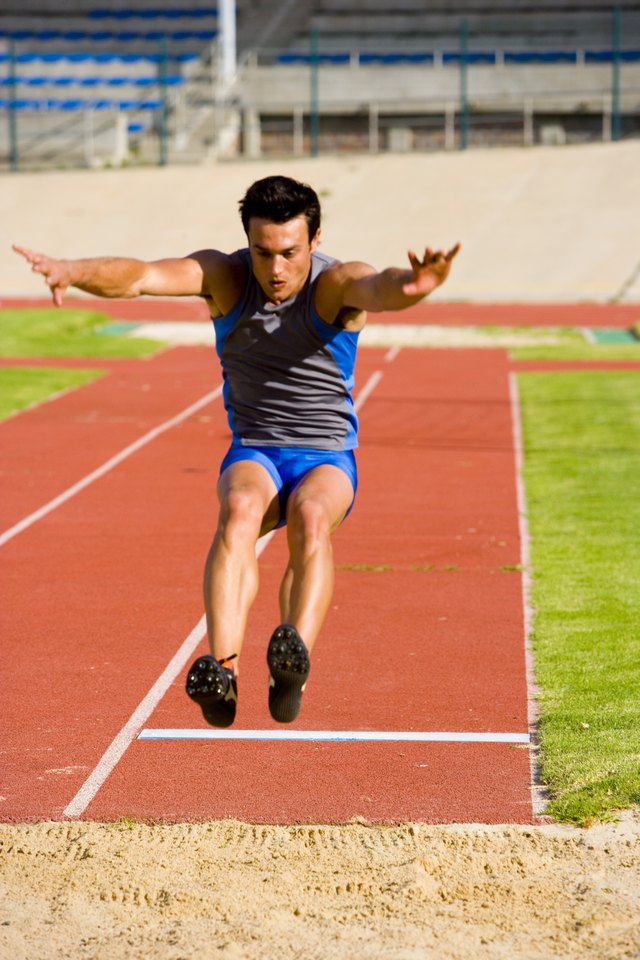
The standing broad jump, which is sometimes called the standing long jump, is an exercise where the participant must jump as far as possible horizontally. Unlike other classic Olympic events, the jumper cannot run to build up momentum. Instead, he must stand in one spot, and use his muscles to jump really far without any kind of lead-in. This exercise takes concentration and focus, and it can be difficult to improve; however, improvement is well worth it. Strengthening and gaining more control over the muscles that allow you to jump great distances will also increase your running speed, since how far you can jump is an indication of the power and control you have in the muscles of your lower body.
Track Your Distances

Jupiterimages/Pixland/Getty Images
The best way to improve your standing broad jump is to have a goal in mind. Use a chart or calendar to fill out the greatest distance you reached every workout. You should also write down which techniques you used so that you will know what is actually working for you. Set a distance goal for a future date, and once you reach this goal, set a new one. If you are a beginner, it’s best to have an idea in mind of how your distances compare with other humans. For men, a distance of 2.00 to 2.29 meters is novice. A distance of 2.80 to 2.89 meters is in the middle, and a distance of over 3.50 meters is excellent. For women, a distance of 1.70 to 1.89 meters is novice, 2.35 to 2.44 meters is average and a distance greater than 3.10 meters is superb. The current World Record is 3.71 meters, which occurred in 1968 and was jumped by Arne Tvervaag.
Look Forward
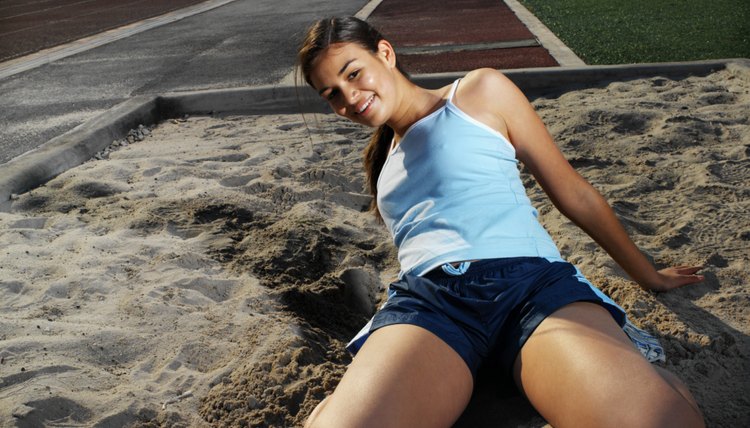
Jupiterimages/Pixland/Getty Images
In baseball, the most common advice for batters is to keep your eye on the ball. This is also good advice for the standing long jump, since it takes so much concentration. Jumpers should always look forward, toward their goal distance, throughout the jump. This will set the direction you want your body to go. Good technique is illustrated by jumpers who achieve a great horizontal distance without jumping very high at the takeoff. You can position yourself for this by leaning forward at a 30 degree angle prior to jumping. Be sure that all of your energy and focus is pointing forward rather than upward.
Position Yourself Correctly
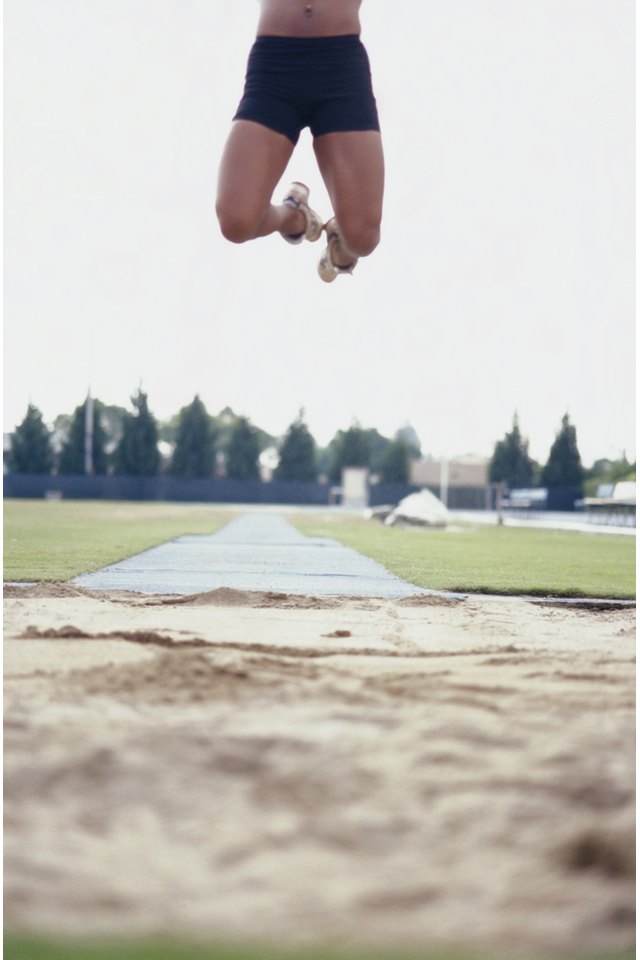
Jupiterimages/Pixland/Getty Images
There is more to positioning yourself than looking and leaning forward. It is important to stand with your feet shoulder-width apart. You should also line up your toes to make sure your feet are even. If your feet and legs are uneven by any amount, your jumping power will be unbalanced, and you won’t jump as far. When swinging your arms, make sure they are parallel to each other the whole time.
Build Momentum
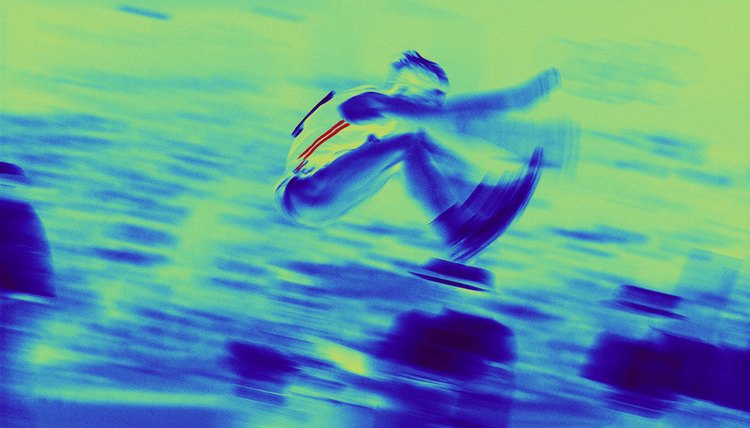
Jupiterimages/Pixland/Getty Images
Using the power from your upper body to propel yourself forward can help you achieve great distances. You should practice the following motions without actually jumping forward at first to get the hang of it. This can also be a great way to warm up before attempting the standing broad jump. Start by standing in the correct position with your toes lined up and feet shoulder-width apart. Using your whole body for extra power, swing your arms forward, then backward, then forward and up over your head. Practice bending your knees during the backward swing, and then leaning forward and jumping as your arms move forward again. The jump should feel like an explosion of power, and swinging your arms should build the momentum that leads up to this power. The key to building the best momentum possible is to do this in a fluid motion, rather than a choppy one.
Exercise Your Legs
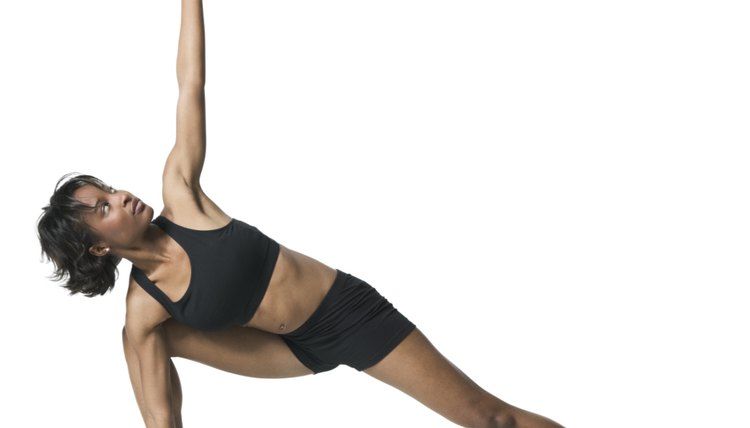
Jupiterimages/Pixland/Getty Images
Having more strength in your legs and abdomen will allow you to jump a greater distance. You should exercise your legs and abs as much as possible to build muscle. You can do this by doing repetitive squats, lunges, sit-ups and crunches. You can also build muscle by running in bursts for speed, practicing yoga or pilates, doing various oblique exercises, and by lifting weights with your legs. Practicing the standing broad jump will exercise your legs as well, but having strong leg muscles to begin with will help you achieve greater distances. Be sure to rest between jumps and exercises to give your muscles the recovery time that they need.
Writer Bio
Melanie Mayne has been writing professionally since 2007. Her work has appeared in the "American Diversity Report" and she loves to write about art, culture, language arts, technology and psychology. Mayne is pursuing a Bachelor of Arts in humanities, minoring in English writing and psychology, from the University of Tennessee at Chattanooga.
